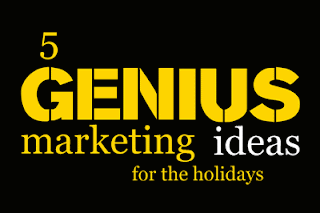Book: Adapting to chaos in the workplace
Submitted by Dottie DeHart, DeHart & Company Public Relations
Palo Alto, CA (April 2013)—When Fast Company’s Robert Safian first coined the phrase “Generation Flux” a little over a year ago suddenly, the uncertainty, instability, and chaos many had been feeling for years had a name.
It’s easy for an unfettered 20-something to embrace chaos, transience, and everything else the “GenFlux” mind-set implies. But what about 40-somethings with mortgages? Glenda Eoyang and Royce Holladay offer reassurance that “reluctant fluxers” can adapt to (and even thrive in) a chaotic new world.
“It’s true that we all need to work in new ways to keep up with the supercharged velocity of change that defines the global economy,” says Eoyang, who along with coauthor Holladay wrote the new book "Adaptive Action: Leveraging Uncertainty in Your Organization."
“And it’s true that leaders need to encourage a sense of urgency in the people we’re counting on to carry out the work.
“However, that sense of urgency needs to energize, not paralyze,” she adds. “We want people excited about the future, not feeling like it’s some kind of alien universe. We need to let them know, in no uncertain terms, that they can get there from here.”
While globalism has opened infinite doors, it has also made decisions exponentially more complex. Markets, governments, and cultures are shifting. Technology is altering everything from the way we buy and sell to the way we communicate to the way we perceive the world. And all of this manifests in pure chaos—the dismaying sense that we can’t predict or control anything about our environment.
In other words, we can’t make long-term plans because market conditions change violently and rapidly. The goals we’re working toward won’t hold still. Yesterday’s “must-haves” aren’t even factors today. We struggle to communicate with team members who live 7,000 miles away and speak English as a second (or third or fourth) language.
Helping less-adventurous organizations move from where they are to where they need to be is what Eoyang and Holladay do for a living. They deploy their Adaptive Action model (thoroughly described in their book) inside big corporations, slow-moving school systems, and government agencies mired in bureaucracy.
Adaptive Action is a cycle of three questions that are repeated in moments when a meeting goes off agenda, in hours when crisis requires rapid response, in days or years when plans are disrupted by unexpected events.
The three questions are simple, but not always easy: What? So what? Now what?
What patterns shape the current situation? What do you observe, see, hear, know? What is happening? What did you and others expect? What surprises? What builds or releases tension? What is working or not working?
Now what will I do to change the pattern? Now what information should I share? Now what responses can I expect to my actions? Now what alliances might I build? Now what future paths might appear? Now what will I do to see how patterns change when I take my action?
There are patterns in chaos.
You don’t have to see the future. You only have to clearly see the present. A lot of anxiety is generated when companies prepare to compete in a future they can’t see. And while a certain amount is inevitable—and actually beneficial as it creates the urgency that drives action—anxiety can spiral out of control if the plans made aren’t firmly grounded in reality.
Some of the old solutions still work. You don’t have to start from scratch. Knowing that the entire system doesn’t have to be scrapped comes as a relief to less adventurous souls who are overwhelmed enough about the new things they have to learn. The trick, says Eoyang, is to be able to see what fits with old solutions and what requires new. (That’s why we call it Adaptive Action.)
“For example, traditional command and control in production and distribution are just as important as flux-inspired exploration and innovation in product design and customer service,” she explains. “The familiarity of the old ways soothes and reassures, which makes room for excitement about the new stuff.”
You can still plan. You just need to plan for a month ahead, not a year ahead (and certainly not five years ahead). When you’re in flux, you can see some things very clearly and others not at all, says Eoyang. Planning processes must be agile enough to fit both. This means tight prediction and control for close and clear information horizons and broad-brush, directional planning for what is fuzzy and far away.
Even the people who kick the hardest and scream the loudest when they’re dragged into this brave new work world will eventually admit that the change has been good for them, says Eoyang.
"Underneath our dislike for change, I think there is a part of humanity that wants to be challenged,” she states. “There is real fulfillment in overcoming these challenges, in mastering new skills, in gaining fresh insights.
About the Authors: Dr. Glenda Eoyang and Royce Holladay are coauthors of Adaptive Action: Leveraging Uncertainty in Your Organization (Stanford University Press, 2013). Eoyang works with public and private organizations and communities to help them thrive in the face of overwhelming complexity and uncertainty. She is a pioneer in the field of human systems dynamics (HSD), which she founded.
Holladay is a leader among HSD Associates around the world who use Adaptive Action in their work.
About the Book: Adaptive Action: Leveraging Uncertainty in Your Organization (Stanford University Press, 2013, ISBN: 978-0-8047871-1-6, $27.95, www.adaptiveaction.org) is available at bookstores nationwide and from major online booksellers.
Palo Alto, CA (April 2013)—When Fast Company’s Robert Safian first coined the phrase “Generation Flux” a little over a year ago suddenly, the uncertainty, instability, and chaos many had been feeling for years had a name.
It’s easy for an unfettered 20-something to embrace chaos, transience, and everything else the “GenFlux” mind-set implies. But what about 40-somethings with mortgages? Glenda Eoyang and Royce Holladay offer reassurance that “reluctant fluxers” can adapt to (and even thrive in) a chaotic new world.
“It’s true that we all need to work in new ways to keep up with the supercharged velocity of change that defines the global economy,” says Eoyang, who along with coauthor Holladay wrote the new book "Adaptive Action: Leveraging Uncertainty in Your Organization."
“And it’s true that leaders need to encourage a sense of urgency in the people we’re counting on to carry out the work.
“However, that sense of urgency needs to energize, not paralyze,” she adds. “We want people excited about the future, not feeling like it’s some kind of alien universe. We need to let them know, in no uncertain terms, that they can get there from here.”
While globalism has opened infinite doors, it has also made decisions exponentially more complex. Markets, governments, and cultures are shifting. Technology is altering everything from the way we buy and sell to the way we communicate to the way we perceive the world. And all of this manifests in pure chaos—the dismaying sense that we can’t predict or control anything about our environment.
In other words, we can’t make long-term plans because market conditions change violently and rapidly. The goals we’re working toward won’t hold still. Yesterday’s “must-haves” aren’t even factors today. We struggle to communicate with team members who live 7,000 miles away and speak English as a second (or third or fourth) language.
Helping less-adventurous organizations move from where they are to where they need to be is what Eoyang and Holladay do for a living. They deploy their Adaptive Action model (thoroughly described in their book) inside big corporations, slow-moving school systems, and government agencies mired in bureaucracy.
Adaptive Action is a cycle of three questions that are repeated in moments when a meeting goes off agenda, in hours when crisis requires rapid response, in days or years when plans are disrupted by unexpected events.
The three questions are simple, but not always easy: What? So what? Now what?
What patterns shape the current situation? What do you observe, see, hear, know? What is happening? What did you and others expect? What surprises? What builds or releases tension? What is working or not working?
Now what will I do to change the pattern? Now what information should I share? Now what responses can I expect to my actions? Now what alliances might I build? Now what future paths might appear? Now what will I do to see how patterns change when I take my action?
There are patterns in chaos.
You don’t have to see the future. You only have to clearly see the present. A lot of anxiety is generated when companies prepare to compete in a future they can’t see. And while a certain amount is inevitable—and actually beneficial as it creates the urgency that drives action—anxiety can spiral out of control if the plans made aren’t firmly grounded in reality.
Some of the old solutions still work. You don’t have to start from scratch. Knowing that the entire system doesn’t have to be scrapped comes as a relief to less adventurous souls who are overwhelmed enough about the new things they have to learn. The trick, says Eoyang, is to be able to see what fits with old solutions and what requires new. (That’s why we call it Adaptive Action.)
“For example, traditional command and control in production and distribution are just as important as flux-inspired exploration and innovation in product design and customer service,” she explains. “The familiarity of the old ways soothes and reassures, which makes room for excitement about the new stuff.”
You can still plan. You just need to plan for a month ahead, not a year ahead (and certainly not five years ahead). When you’re in flux, you can see some things very clearly and others not at all, says Eoyang. Planning processes must be agile enough to fit both. This means tight prediction and control for close and clear information horizons and broad-brush, directional planning for what is fuzzy and far away.
Even the people who kick the hardest and scream the loudest when they’re dragged into this brave new work world will eventually admit that the change has been good for them, says Eoyang.
"Underneath our dislike for change, I think there is a part of humanity that wants to be challenged,” she states. “There is real fulfillment in overcoming these challenges, in mastering new skills, in gaining fresh insights.
About the Authors: Dr. Glenda Eoyang and Royce Holladay are coauthors of Adaptive Action: Leveraging Uncertainty in Your Organization (Stanford University Press, 2013). Eoyang works with public and private organizations and communities to help them thrive in the face of overwhelming complexity and uncertainty. She is a pioneer in the field of human systems dynamics (HSD), which she founded.
Holladay is a leader among HSD Associates around the world who use Adaptive Action in their work.
About the Book: Adaptive Action: Leveraging Uncertainty in Your Organization (Stanford University Press, 2013, ISBN: 978-0-8047871-1-6, $27.95, www.adaptiveaction.org) is available at bookstores nationwide and from major online booksellers.


Comments
Post a Comment